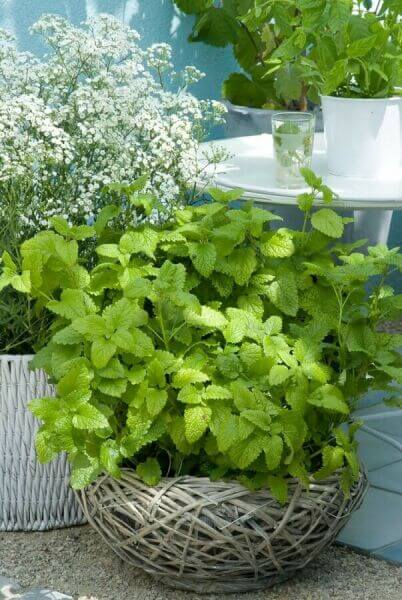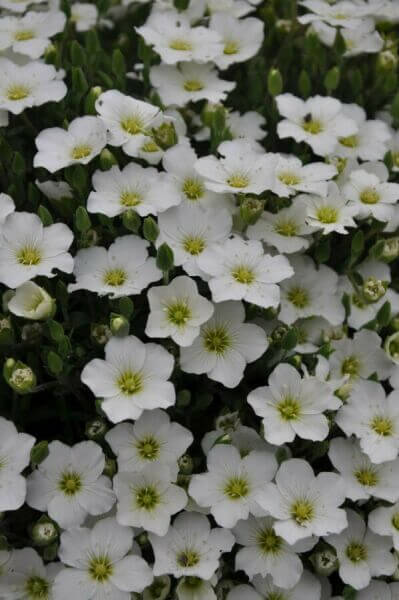Hedge Plants For Wildlife Corridors
Enhance your garden's appeal with rich hedge varieties such as Yew (Taxus), Thuja, Laurel, Photinia, and Bamboo, celebrated for their structural stability and ecological benefits.
Yew and Thuja provide evergreen coverage and winter season durability, while Laurel uses fast development and broad, fragrant leaves.
Photinia includes seasonal appeal with its vibrant red foliage, and Bamboo lends a low-maintenance, serene atmosphere.
These hedges enhance air quality, decrease sound, and develop tranquil, private spaces.
Correct planting, spacing, and maintenance ensure energetic development and ecological harmony.
Explore how these lavish varieties can raise your garden's appeal and well-being.
Key Takeaways
Transform Your Garden With Lush Hedge Ranges
- Select Yew for its thick, evergreen development and unparalleled longevity.
- Select Laurel for its quick development and broad leaves, making sure quick privacy.
- Choose Photinia for its dynamic seasonal foliage, which turns a striking dark red.
- Use Bamboo for a low-maintenance, winter-hardy hedge with visual appeal.
- Area plants 2-3 per meter and prune routinely for optimum development and health.
Popular Hedge Plants
When changing a garden with lavish hedge ranges, it's essential to consider popular hedge plants such as Yew, Thuja, Laurel, and Photinia due to their unique characteristics and benefits.
Yew (Taxus) is highly esteemed for its longevity and thick, green development, making it a prime option for sustaining landscapes.
Thuja is kept in mind for its evergreen foliage and robust winter durability.
Photinia includes seasonal vibrancy with red leaves that darken gradually, developing vibrant visual appeal.
Laurel provides fast growth and fragrant, broad leaves, ideal for quick personal privacy.
In Addition, Bamboo is an exceptional option for atmosphere, providing a low-maintenance, winter-hardy choice that improves the garden's aesthetic with its elegant, swaying canes.
These choices accommodate a variety of horticultural needs and choices.
Advantages of Garden Hedges
Garden hedges provide a wide range of benefits, making them an important addition to any landscape. These natural barriers are economical to execute and provide substantial wind security, enhancing air flow and contributing to sound reduction. The dense foliage of hedges like Thuja and Beech makes sure privacy by blocking exposure, creating a secluded and peaceful environment.
Hedges also play a vital role in microclimate guideline, supplying a stable environment that cultivates plant growth and decreases temperature variations. Their elaborate leaf structures filter toxins, improving air quality and adding to a healthier garden environment.
Moreover, hedges stand out in sound reduction, soaking up and deflecting sound waves to lower ambient sound levels. This double functionality of offering both visual and acoustic personal privacy boosts the overall serenity and visual appeal of any garden.
Planting and Maintenance Tips
For an effective hedge, careful preparation of the planting area is important. Make sure the soil has proper pH and drainage to support strong root advancement.
Area the plants properly for the picked types. Water the hedge frequently during its initial growth stage, adjusting as needed with seasonal modifications.
Carry out a organized pest control and disease avoidance method, utilizing chemical or organic treatments when essential. Routinely check for aphids, termites, and fungal infections.
Apply mulch to retain moisture and suppress weeds. Seasonal pruning promotes dense growth and air flow, vital for plant health.
Following these standards will assist you cultivate a lively, well-kept hedge that improves the charm of your garden.
Spacing and Cutting Standards
Spacing and Cutting Guidelines
Correct spacing and cutting are important for cultivating healthy, aesthetically appealing hedges. Appropriate spacing makes sure each plant gets enough nutrients, light, and air flow.
Follow these standards for optimum hedge upkeep:
- Spacing: Position hedge plants 2-3 plants per meter to motivate robust development.
- Pruning Strategies: Regular pruning is necessary for maintaining wanted hedge height and shape. Trim new development in summer and cut down older wood during winter.
- Seasonal Care: Change trimming schedules and approaches according to seasonal requirements to guarantee plant health.
- Hedge Height: Routinely screen and cut to keep the preferred hedge height and accomplish uniform visual appeals.
Following these steps will guarantee your hedge grows, enhancing both the appeal and performance of your garden.
Selecting the Right Hedge
Picking the Right Hedge
Picking the proper hedge involves evaluating factors such as fully grown height, foliage density, and ecological resilience. Effective hedge Browse this site plant choice requires understanding each species' development characteristics and site-specific adaptability.
For instance, Yew (Taxus) uses excellent durability and dense development, while Thuja is noteworthy for its winter season durability. In addition, thinking about maintenance requirements is vital; fast-growing types like Laurel or Privet need regular cutting, whereas low-maintenance choices like Bamboo or Ivy may be more suitable for those seeking very little maintenance.
Environmental factors such as soil type, light accessibility, and moisture conditions must also direct the choice process. This mindful approach guarantees the picked hedges will flourish, supplying both aesthetic and functional benefits to the garden landscape.
Shipment and Planting Guidance
To guarantee your hedge plants grow, they should be delivered by specialized carriers and planted quickly upon arrival.
Follow these vital actions for successful planting:
- Soil Preparation: Enrich the soil with raw material to enhance drain and nutrient content.
- Planting Depth: Create a trench twice the width and equivalent to the depth of the root ball.
- Watering Strategies: Water completely after planting, keeping the soil consistently damp but not filled.
- Mulching: Use a layer of mulch to maintain moisture and suppress weeds.
Client Support and Service
Provided the important function of prompt help in horticultural pursuits, our consumer assistance team is available six days a week through telephone, email, and social media to provide professional recommendations and quickly attend to any concerns. Their commitment to quick reaction times guarantees client fulfillment by dealing with inquiries associated with plant health, optimal planting methods, and upkeep schedules.

Availability
-------------------
Within 24 hours
This extensive support group, strengthened by an excellent 9.3/ 10 consumer rating, highlights our commitment to enhancing the gardening experience for each client.
Often Asked Questions
For How Long Does It Consider Hedge Plants to Develop?
Hedge plants normally need one to 3 years to end up being completely developed, with the precise duration varying by species and growing conditions.
Effective care during this critical period is necessary for robust development. Constant watering, watchful weed control, and suitable fertilizer application are critical in promoting strong root development.
For example, fast-growing species like Laurel might establish quicker, while slower-growing varieties such as Yew might take longer. Diligent upkeep speeds up the facility procedure, resulting in healthy and thick hedges.
What Are the Finest Hedge Plants for Privacy?
The question of the finest hedge plants for personal privacy includes evaluating evergreen and deciduous options.
Evergreen hedges like Thuja, Laurel, and Cypress supply year-round protection, guaranteeing continuous personal privacy.
On the other hand, deciduous hedges such as Beech provide seasonal personal privacy, shedding leaves in chillier months.
Key upkeep ideas for privacy hedges consist of regular trimming, fertilizing in spring, and correct spacing-- generally 2 to 3 plants per meter.
Additionally, constant watering and persistent weed removal are important for promoting healthy, dense development.
Can Hedge Plants Draw In Wildlife to My Garden?
Yes, hedge plants can bring in wildlife to your garden by offering essential advantages like shelter, food, and nesting sites, therefore enhancing regional biodiversity. For instance, yew, holly, and laurel are exceptional for drawing in birds, while ivy supports a range of insects.
Nevertheless, it is necessary to keep in mind that there are some downsides, such as increased upkeep to handle bugs and regular upkeep. Carefully selecting and maintaining hedge varieties can help stabilize these downsides and benefits, ultimately cultivating a dynamic and sustainable ecosystem in your garden.
Are There Any Blooming Hedge Plants Available?
Yes, there are flowering hedge plants available that can improve the appeal of your garden.
For instance, Elaeagnus, likewise known as Olive Willow, produces aromatic white flowers in the fall, including a touch of elegance.
Photinia, another popular choice, showcases dynamic red leaves that grow into a rich green, creating a dynamic visual impact throughout the seasons.
To make sure these plants thrive, it's vital to practice appropriate pruning strategies and seasonal upkeep, such as trimming new growth in the summertime and cutting down in the winter season.
These procedures will assist keep the health and aesthetic appeal of your flowering hedges.
How Do I Prevent Pests in My Hedge Plants?
To prevent pests in hedge plants, employ natural pest control methods and maintain appropriate hedge care. Introduce useful bugs like ladybugs, which take advantage of hazardous insects, to produce a well balanced community.
Routinely examine your hedges for signs of infestation and immediately eliminate any afflicted parts to prevent the spread. Ensure the health of your hedges by applying balanced fertilizers and supplying appropriate water.
Make use of mulching to keep soil moisture and proper spacing to decrease plant stress and promote robust growth. These practices jointly assist in lessening insect issues and maintaining a healthy hedge.
Conclusion
In essence, picking the ideal hedge ranges such as Yew, Thuja, and Laurel can transform any garden into a tranquil sanctuary. These plants offer year-round greenery, boost visual appeal, and offer practical advantages like noise reduction and wind defense.
Appropriate planting techniques, precise spacing, consistent watering, and seasonal trimming are essential for ideal growth.
Reliable shipment services and professional customer assistance ensure a smooth experience from purchase to planting, making it simpler than ever to raise your outdoor area.
Garden hedges provide a multitude of advantages, making them a valuable addition to any landscape. These natural barriers are economical to implement and supply significant wind defense, enhancing air blood circulation and contributing to noise decrease. The dense foliage of hedges like Thuja and Beech guarantees privacy by obstructing presence, producing a remote and serene environment.

Pruning Techniques: Routine pruning is necessary for preserving desired hedge height and shape. Trim brand-new growth in summer and cut back older wood throughout winter.